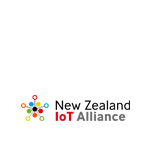Full article source: www.networkworld.com
Organizations that are leveraging IoT to drive better business outcomes are increasingly using digital twin technology. In fact, Gartner predicts half of large industrial companies will be using them by 2021.
A digital representation of a physical object, digital twins allow businesses to create a crystal-ball-like-view into the future. They enable simulation, analysis and control to test and explore scenarios in a practice setting before initiating changes in the real world.
While digital twins have historically been associated with more complex technology environments, its impressive ability to both eliminate problems and deliver next-level operational performance is making these models a must-have technology in every IoT team’s toolkit.
Some of the first digital twin cases I’ve witnessed involved complex—and usually expensive—capital assets such as diesel engines, turbines, and heavy-duty mining and construction equipment. Their digital representations are equally complex, comprising finite state machines with potentially tens of thousands of discrete states. However, digital twins offer even the simplest constructs a vast number of benefits. I’d like to quickly explore five reasons every IoT deployment needs digital twins:
1. Predict the future
In order to predict the condition of an asset down the road, it’s necessary to transcend a pretty dashboard view of a device’s current anatomy, and truly understand its behavior. Digital twins provide a closer look at what conditions and events influence it to change, to regress or thrive, from one environmental state to another.
2. Increase accuracy
Understanding these behavioral patterns, and leveraging advanced machine learning algorithms, enables meaningful digital twins to be played forward or backward in time. This modeling allows operators to better understand how a device might perform in a certain scenario, for example, to alleviate a potential mechanical failure before it happens.
3. Avoid failure
This may seem obvious, but businesses place a high value on being able to avoid costly breaks or errors. Digital twins enable teams to explore innumerable possibilities so they can deliver, with a higher level of confidence, a recommendation around the longevity or reliability of an asset. Businesses that are wanting to improve uptime and increase production can leverage digital twins to do so more quickly.
4. Reduce costs
There are given capex and opex costs around any IoT deployment. Unexpected costs around labor or parts or both, are also expected to a certain degree. Digital twins – because they help avoid mistakes and identify success early – are therefore a powerful weapon for minimizing them. This frees up “rainy day” budget to allocate to new IoT priorities.
5. Create composite digital twins
Digital twins make it easier for software applications to interact with remote devices, whether to query them for conditions or instruct them to perform certain actions. However, digital twins containing only real-time state information are limited in their utility. The next step in digital twin evolution is to imbue them with behavioral information.
By advancing from a single asset view to a larger asset population, organizations can unlock new opportunities to enhance operations. For example, an engine, transmission, and braking system may all have discrete digital twins, but will need to interact with each other every bit as much as the real engine, transmission, and braking system do in order to garner even deeper insight into overall system behavior.
Tip for getting started
Despite the fact that digital twins are virtual machines built by software and used by software, many in the industry seem to think that humans should be able to “look” at them. This desire leads to the belief that digital twins should incorporate information about the appearance and structure of the physical object, possibly using CAD data. While there may be a few IoT use cases that benefit from digital twins incorporating spatial information about devices – augmented reality for repair technicians for example – the majority do not.
Digital twins are central to the vast majority of industrial IoT use cases. They go beyond reporting what the current device state is, but why, enabling businesses to drive toward a whole new range of ROI-driven objectives, such as adaptive diagnostics, condition-based maintenance and predictive failure.
I’d love to know: Are you using digital twins? Why or why not?






